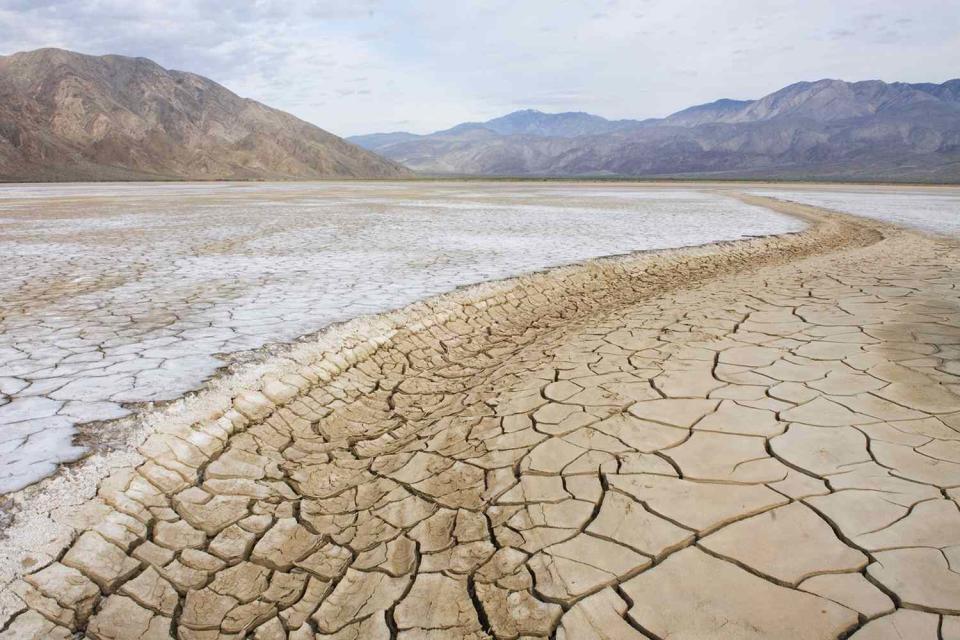Fungus That Causes 'Valley Fever', a Pneumonia-Like Illness, Is Expected to Spread, Sicken More People: Study
Researchers predict that a dangerous fungus will spread in the western U.S., due to lack of precipitation brought on by climate change

Getty Images
Climate change is expected to increase the spread of the fungus that causes Valley Fever, as it thrives in dry soil.Valley Fever, a pneumonia-like illness that’s caused by inhaling a fungal spore called coccidioides, is expected to spread across the western U.S., as drier climates create hospitable environments for the spore to thrive.
While most cases of Valley Fever are seen in Arizona and California, according to recent CDC data, a new study published in GeoHealth found that by 2095, there could be 50% more cases of Valley Fever, spread across 17 states.
“As the temperatures warm up, and the western half of the U.S. stays quite dry, our desert-like soils will kind of expand and these drier conditions could allow coccidioides to live in new places,” Morgan Gorris, who led the GeoHealth study while at the University of California, Irvine, told NBC News.

Getty Images
The symptoms of Valley Fever are similar to the flu or pneumonia, often leading to it being under-diagnosed.Never miss a story — sign up for PEOPLE's free daily newsletter to stay up-to-date on the best of what PEOPLE has to offer, from juicy celebrity news to compelling human interest stories.
It doesn’t take much to inhale the spore that causes Valley Fever, according to the study, as “any type of soil disturbance, like high winds or digging in dry soils, can cause Coccidioides spp. spores to become airborne and potentially inhaled by humans.”
And while the most recent CDC data puts Valley Fever cases at just over 20,000 a year, “tens of thousands more illnesses are likely to occur and may be misdiagnosed because many patients are not tested for Valley Fever.”
Related: There's a Leprosy Outbreak in Florida
That’s because Valley Fever’s symptoms mimic the flu or pneumonia, according to the Mayo Clinic. Fever, cough, tiredness, shortness of breath, headache and chills are all symptoms — although some may develop a red, spotty rash.
The spores may also cause nodules on the lungs, which can resemble cancer in an X-ray. If ruptured, these nodules may require surgery to repair the damage.
While most people recover from Valley Fever, if the fungal infection spreads, the Mayo Clinic notes that “it can cause problems including skin ulcers, abscesses, bone lesions, severe joint pain, heart inflammation, urinary tract problems and meningitis — a potentially fatal infection of the membranes and fluid covering the brain and spinal cord.”
And while antifungal medications can help, “all antifungals can have serious side effects,” according to the Mayo Clinic.
Preventive measures include wearing a mask when outdoors, avoiding dust storms, and wetting soil before digging in it — especially for people more prone to serious side effects from Valley Fever.
According to the CDC, those at higher risk of complications include people with compromised immune systems, pregnant women, and those who are Black or of Filipino descent.
While Valley Fever cannot easily spread from person-to-person, fungal-based diseases — which were the basis for the hit video game and TV show, The Last of Us — are “the coming superbugs,” Dr. George Thompson, an infectious disease specialist at the University of California, Davis, told NBC News.
“I think they’re really the ones that are going to be problematic over the next decade," he said. "And Valley Fever is going to be a key part of that,”
“They are really here to stay. This battle is sort of just beginning.”
For more People news, make sure to sign up for our newsletter!
Read the original article on People.

